Inside Europe's first eco-mosque
with Imam Dr Sejad Mekić (2005)

What should a twenty-first century British mosque be? This is the question the trustees and architects of Cambridge Central Mosque sought to answer when designing the new £23 million facility at 309-313 Mill Road, which opened its doors for regular worship in April 2019. Hosted by Clare alumnus Hafiz Dr Sejad Mekić (2005), the Development team took a look around to discover what makes it so special.
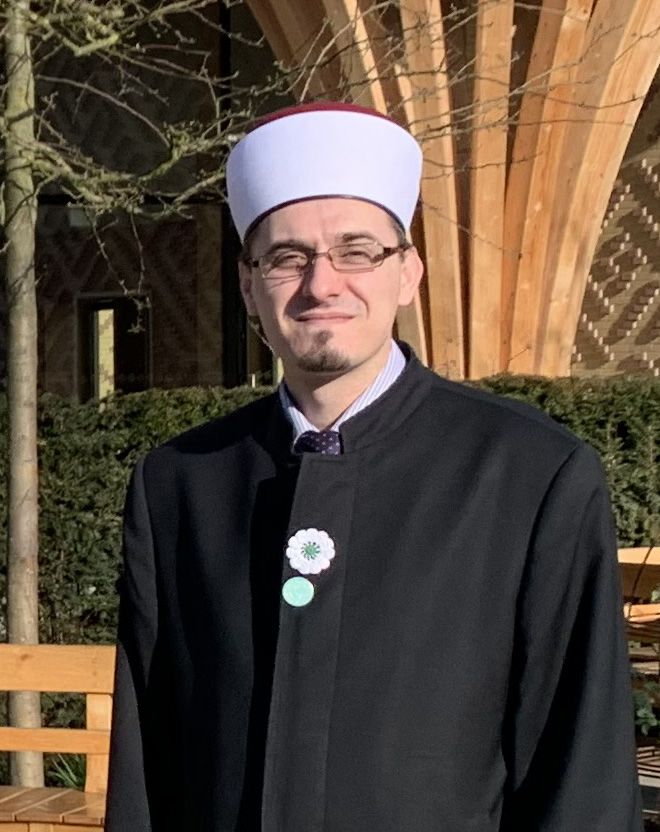
Architecturally, the building is breath-taking. It is supported throughout by intricately intertwined pine columns, designed to look like a grove of trees. These were conceived by David Marks MBE (1952-2017) of Marks Barfield Architects, who also created the London Eye and the Kew Gardens Treetop Walkway, and are intentionally evocative of the Gothic fan vaulting used in King’s College Chapel.
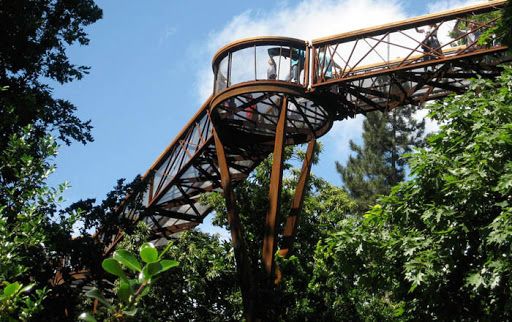
Kew Gardens Treetop Walkway, designed by Marks Barfield Architects
Kew Gardens Treetop Walkway, designed by Marks Barfield Architects
Beyond the imposing portico, the roof of the mosque is topped with a gilded dome, and the timber walls are clad with familiar local brick inscribed with a repeating Qur’anic verse proclaiming the oneness of God.
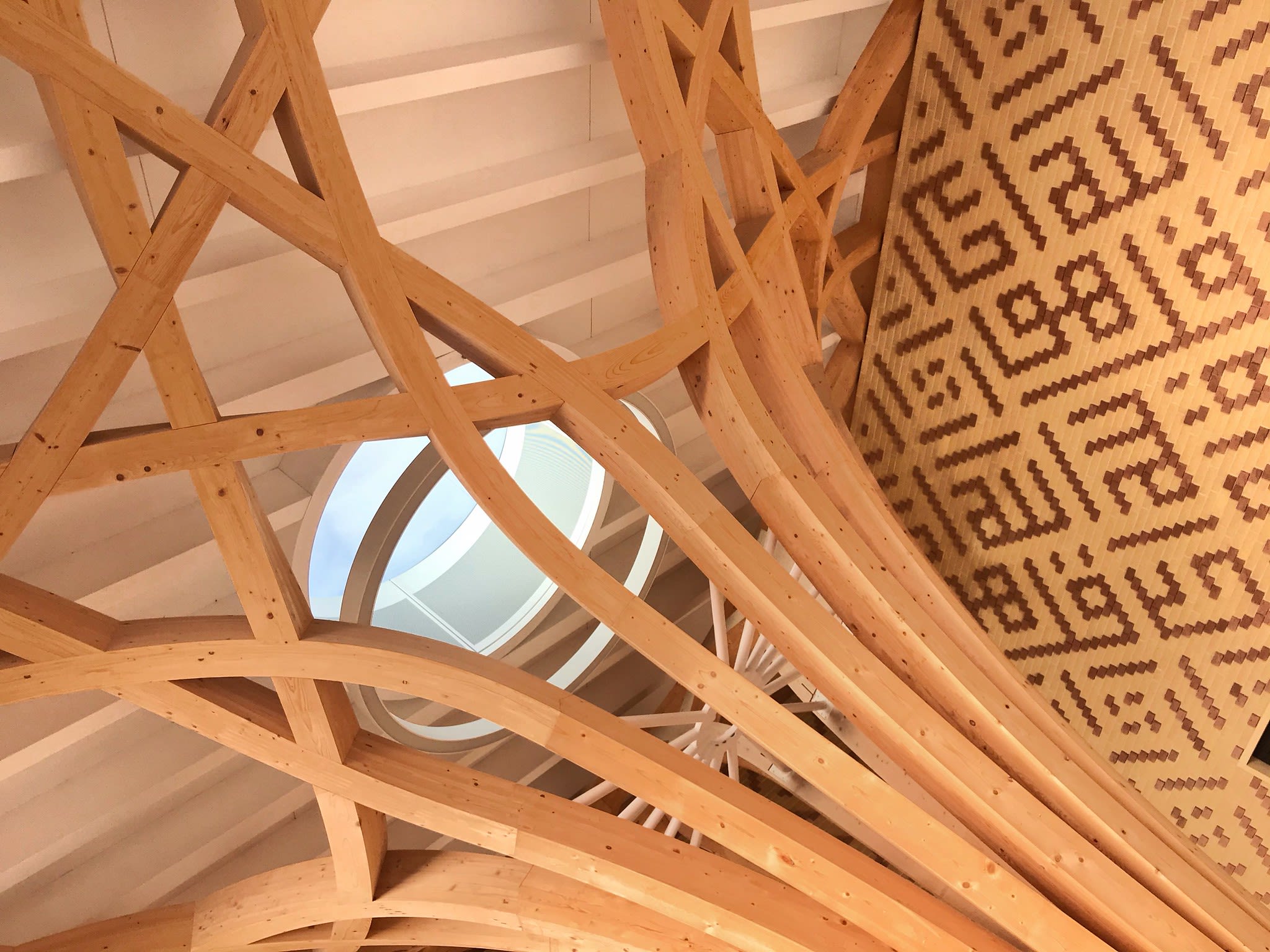
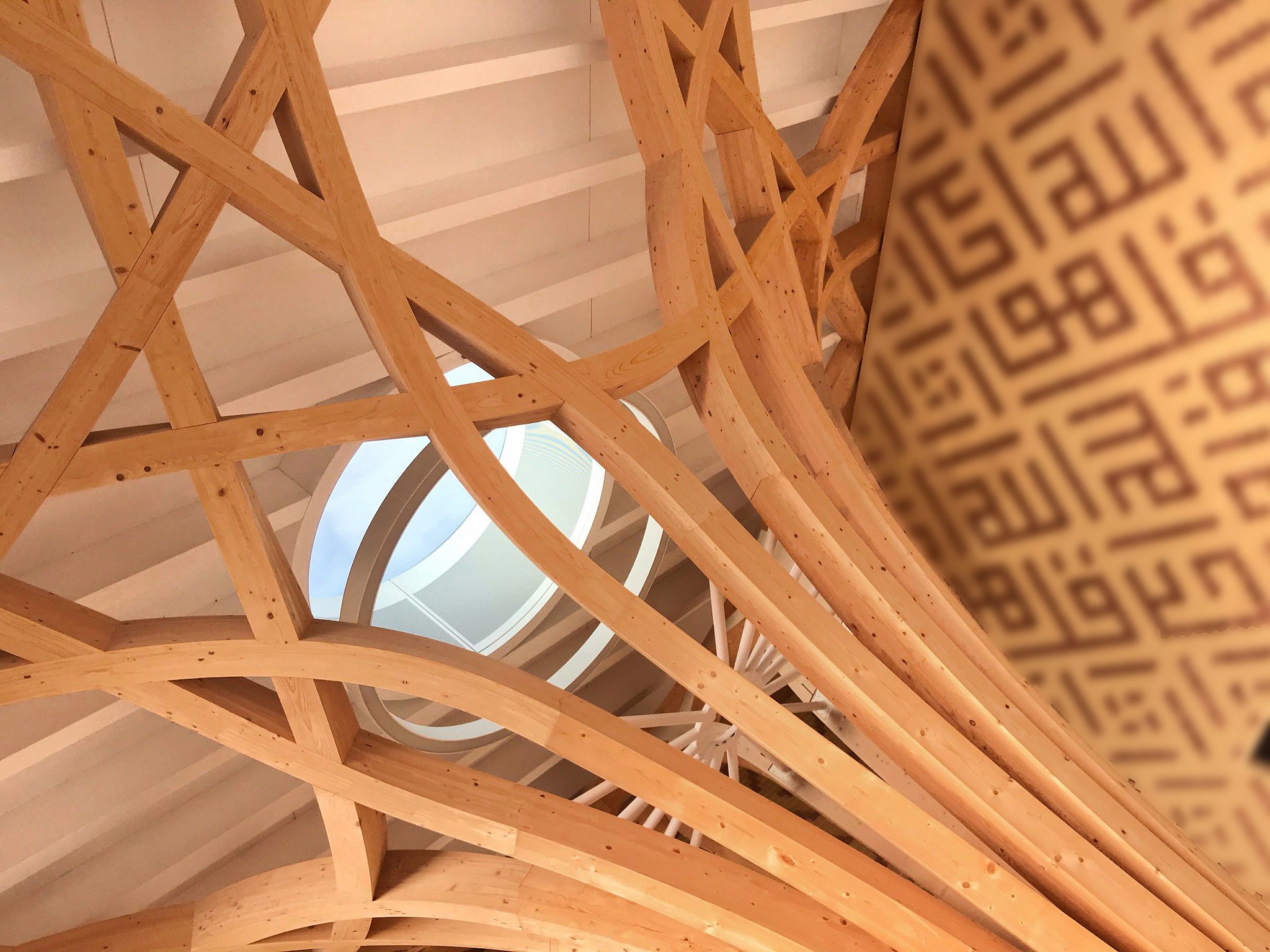
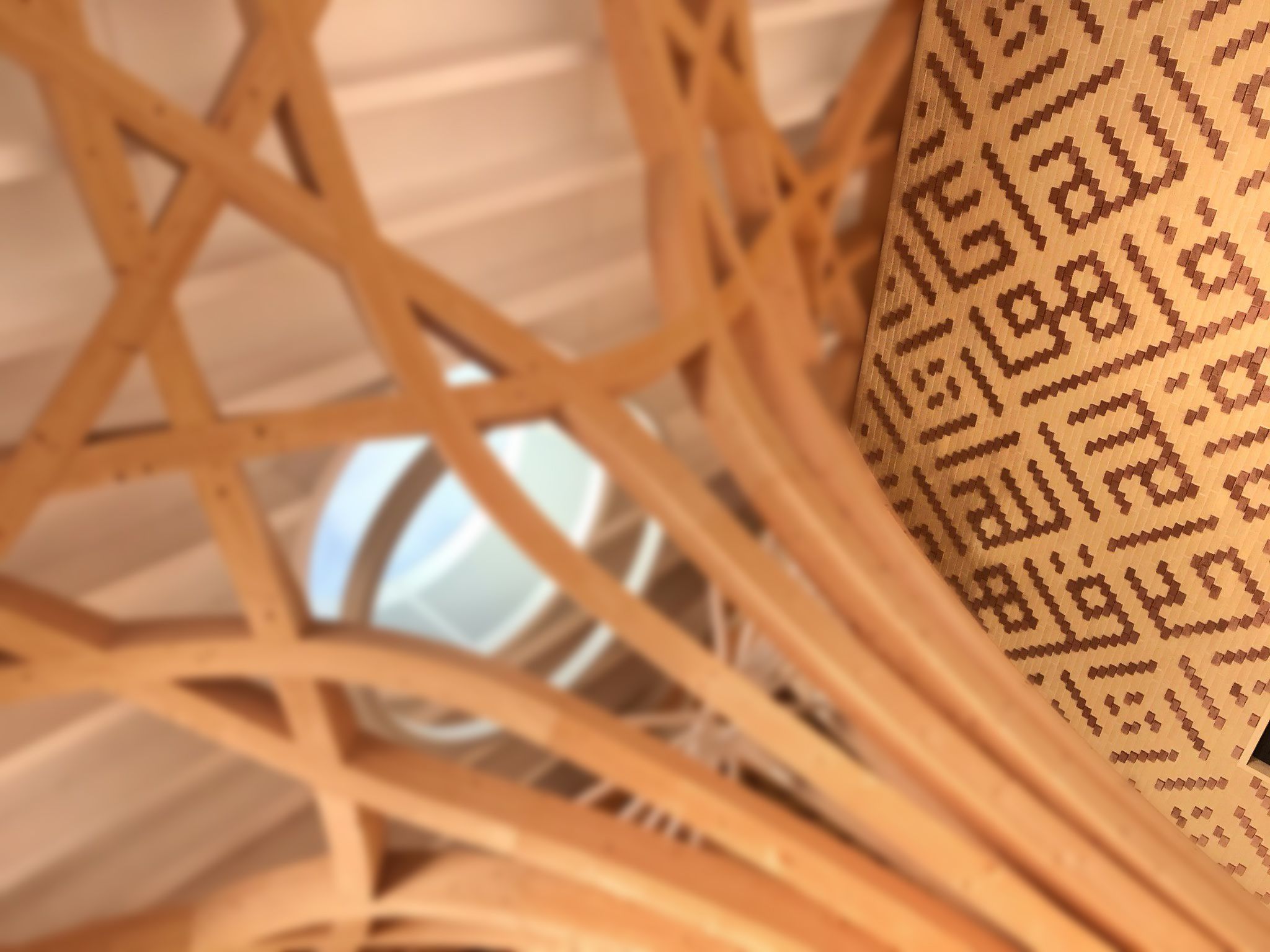
Our host, Hafiz Dr Sejad Mekić (2005) is the first new imam appointed by Cambridge Mosque Trust. Sejad, who holds dual Bosnian-British citizenship, read for an MPhil in Theology at Clare, before going on to complete a PhD at SOAS in 2011. Alongside his full-time research, he worked part-time as imam and teacher at the Mawson Road mosque in Cambridge.
Between 2015 and 2018, he moved to Bosnia where he worked as special advisor for education and culture at the Bosnian Ministry of Religious Affairs. Then, after a year teaching at the University of Exeter, Sejad and his family returned to Cambridge, where he took the position as head imam of Cambridge Central Mosque.
They now live onsite full-time in one of the mosque’s residential units, as does Sejad’s colleague, Imam Ali Tos, and his family.
Sejad describes the opening of the mosque as a “milestone” for Cambridge’s Muslim community. “The existing mosque facilities have long been overcrowded,” he tells us. “This mosque, with all its amenities will, we hope, develop a cultural bridge fostering better understanding between Cambridge’s diverse communities.”
The mosque is not attached to any specific denomination of Islam, and welcomes Muslims of all backgrounds.
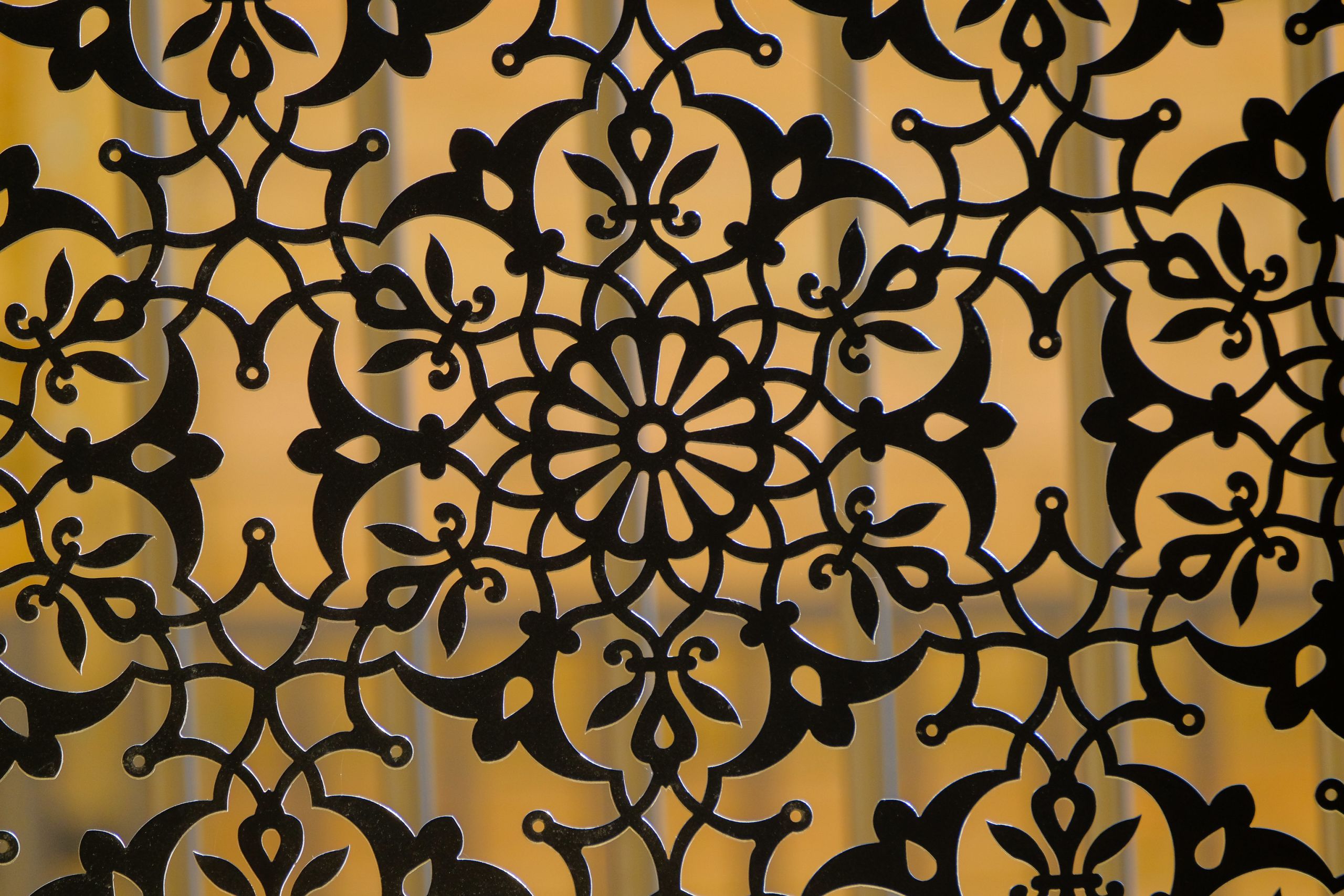
Sejad begins the tour by pointing out the garden at the front of the mosque, his favourite part of the complex to spend time in. Designed by Professor Emma Clark, the space combines key elements of Islamic garden design, inspired by Jannat al-Firdaws (the Paradise Gardens described in the Qur’an), with native British plant species and a relaxed planting style. The front portion of the gardens are open to the public year-round. Sejad points out the prolific use of yew throughout the garden design, specifically chosen to mirror its traditional inclusion in churchyards across the UK. “An obvious concern for sustainability, biodiversity and insect-friendly planting are additional features that make our mosque gardens a place of true admiration,” he says.
A key element of the mosque’s mission statement is a commitment to gender inclusivity. At the centre of the main prayer hall stand two moveable decorative screens, with varying heights to provide different levels of privacy during prayer for women of all Muslim traditions. There is also an adjoining area for parents with young children, protected with soundproof glass. The ablutions spaces feature baby-changing facilities in both the men’s and women’s areas.
When asked why this is such a key part of the mosque’s philosophy, Sejad said, “The reason why our mosque trustees, chaired by Shaykh Abdal Hakim Murad, wanted our mosque to be regarded as one of the leading gender-inclusive mosques in the country is quite simple. Namely, the Islamic sacred texts and the early Muslim practices all point to the fact that places of worship are built or established for all demographics of the society, and historically were frequented by all without any exceptions. One of my former teachers, an expert on the Islamic traditions (hadith), argues that women and children regularly attended congregational prayers at the Prophet’s time in his mosque in the city of Medina and continued doing so after the Prophet’s demise.”
He continued, “I think this is very important as believing men and women feel, perhaps more than ever before, that they should have equal opportunities in every aspect of life including worship. Many of them are struggling to stay connected with the Divine, and no doubt places of worship are best venues for achieving exactly that.”
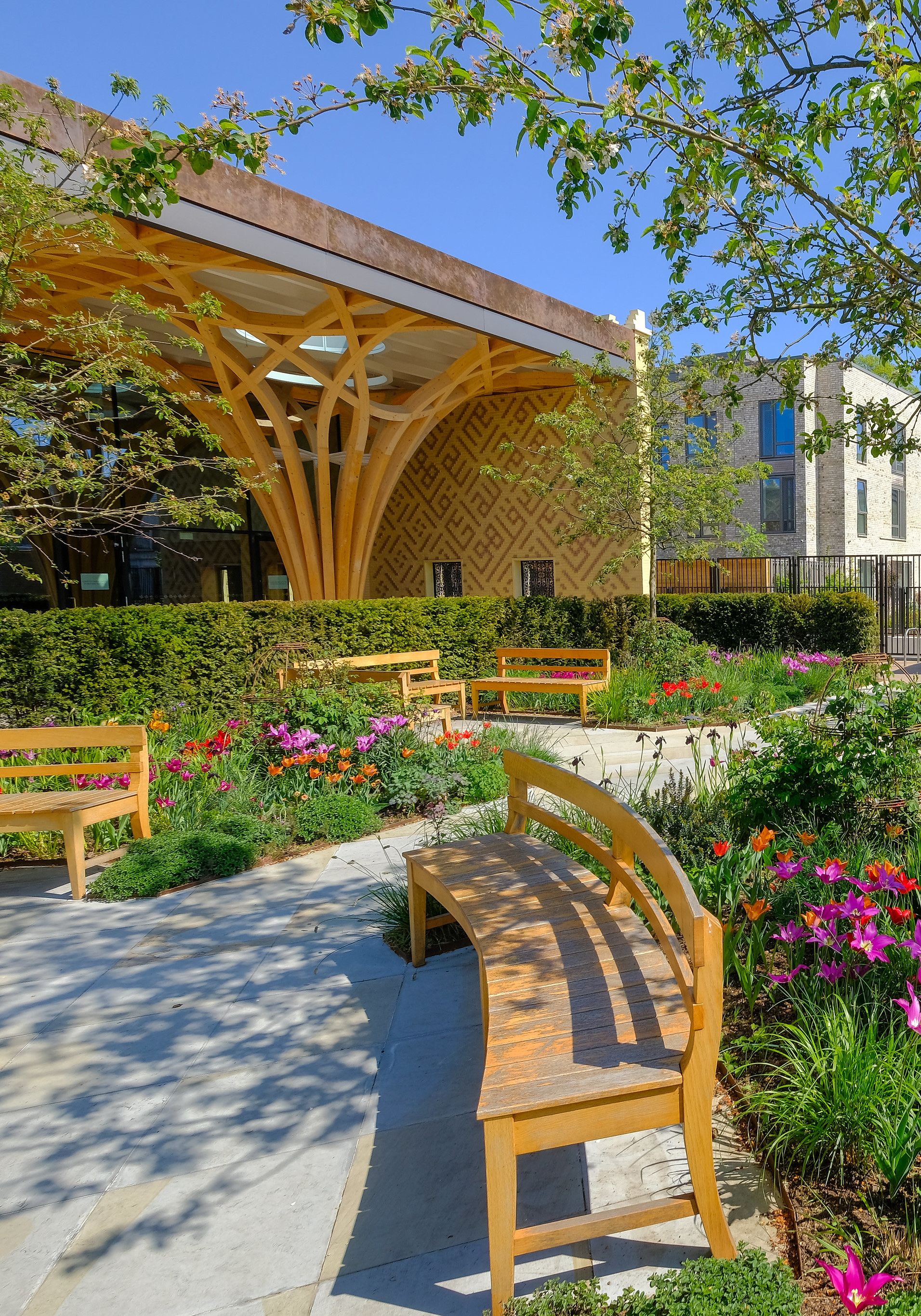
Mosque Gardens designed by Professor Emma Clark. photo credit: Sir Cam
Mosque Gardens designed by Professor Emma Clark. photo credit: Sir Cam
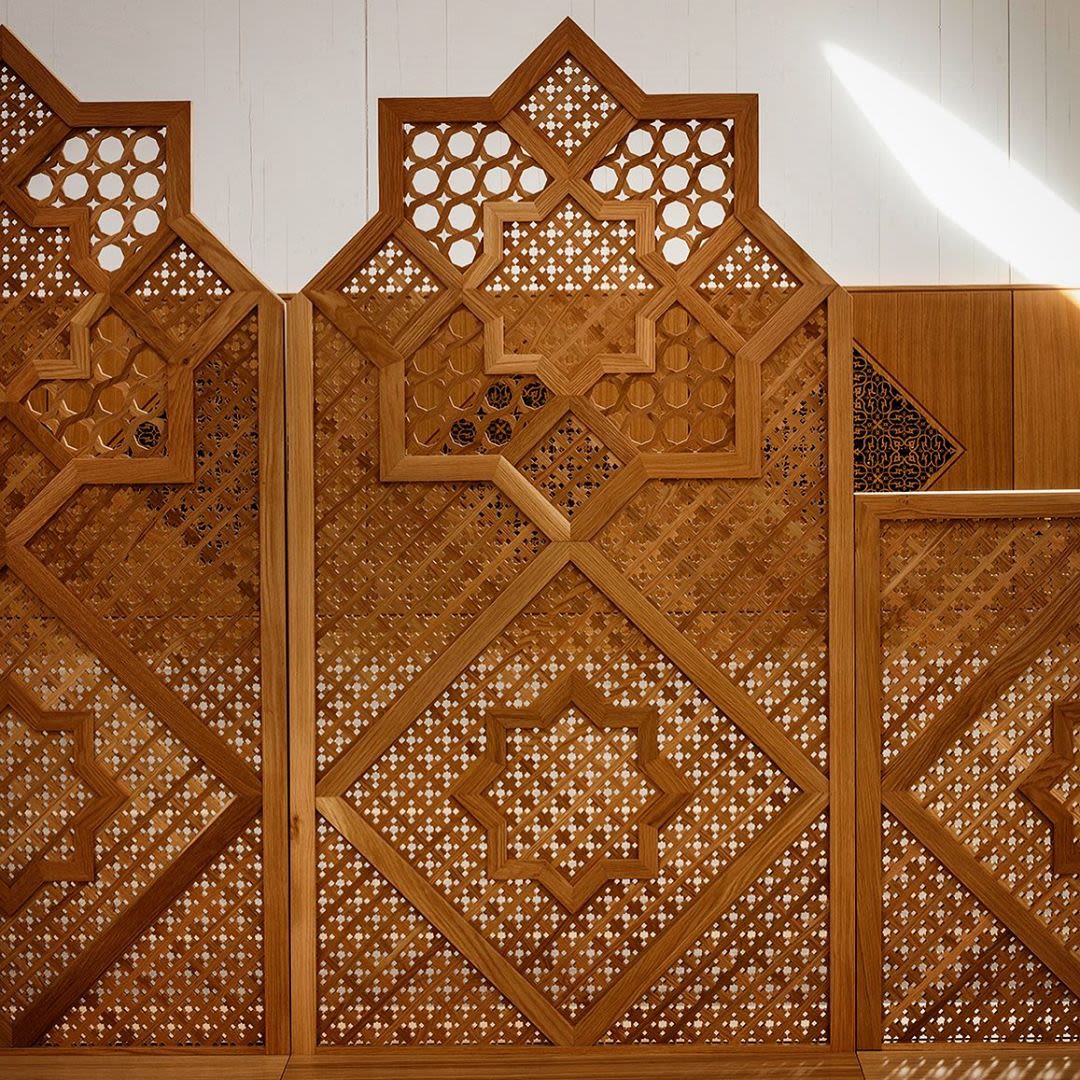
Multi-level Mashrabiya screen. photo credit: Morley von Sternberg FRIBA
Multi-level Mashrabiya screen. photo credit: Morley von Sternberg FRIBA
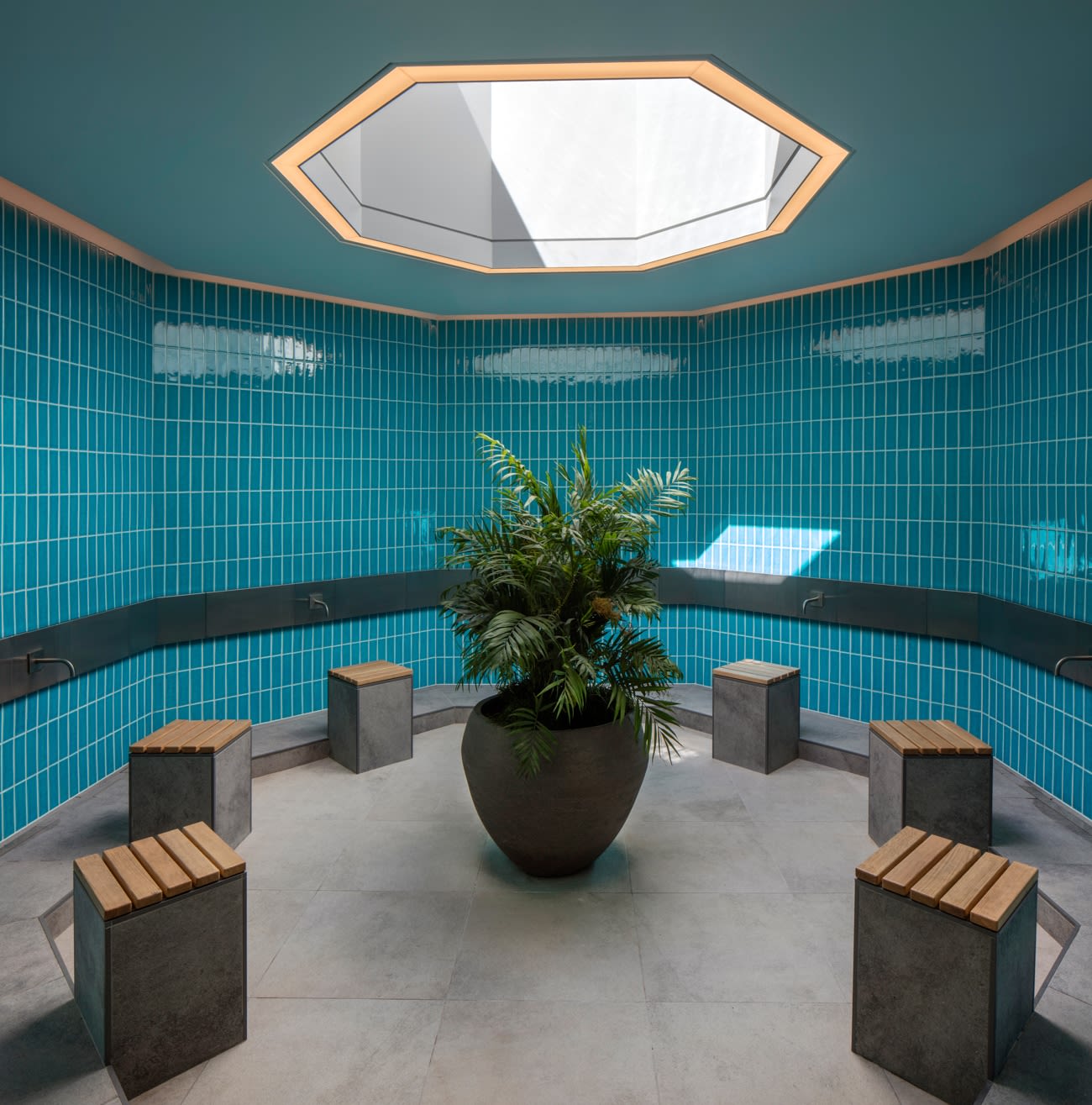
Women's ablutions area. photo credit: Morley von Stenberg FRIBA
Women's ablutions area. photo credit: Morley von Stenberg FRIBA
We complete our tour in the cafeteria. Though not yet opened to the public, once the kitchens are fully completed this space will stand as further evidence of the trust’s commitment to openness and engagement with the Cambridge community as a whole. The trust have made serious effort to ensure that the local community have been engaged with the project from its inception, and that the mosque creates a safe and welcoming environment for people of all faiths and none.
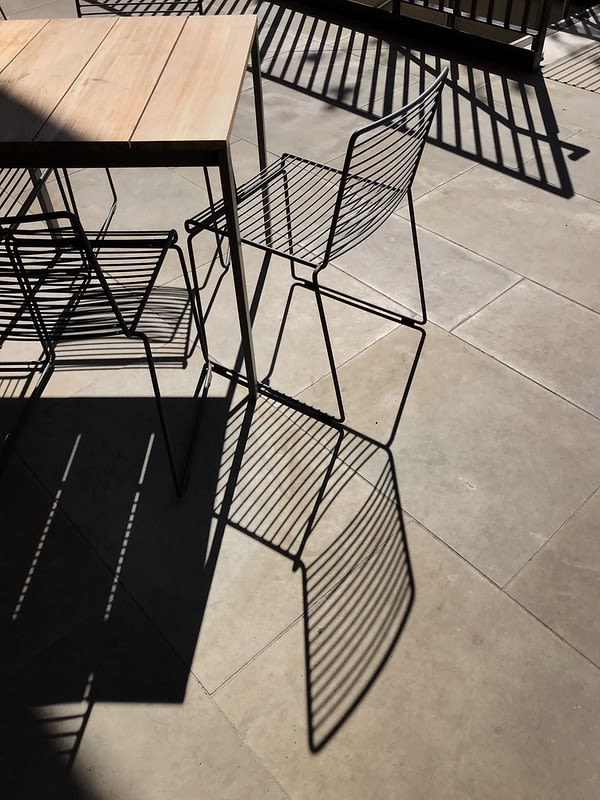
Sejad describes the mosque as “a community project at every stage of its development. The response from our local community has been very positive. Many of our neighbours have congratulated us - some of them came in person to express their delight for the mosque opening, while some sent us cards, emails and encouraging text messages instead. Similarly, we are very grateful to some prominent figures from the local community who joined the opening ceremony and shared in joy and happiness on the day.”
While the mosque has been closed for prayers and tours in the wake of the coronavirus pandemic, the Trust is still providing vital community support. Services are livestreamed daily, and financial assistance is given to the most vulnerable through Zakat collections.


